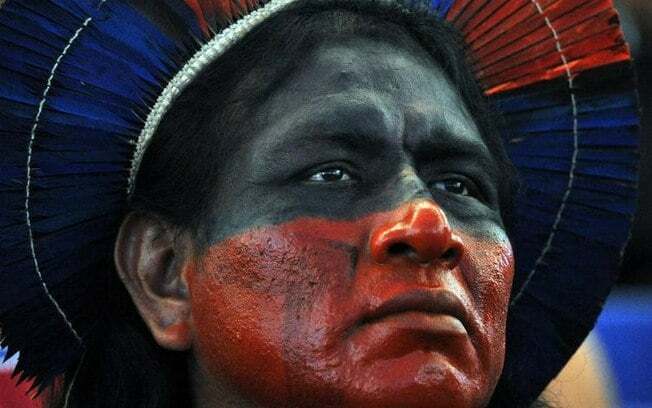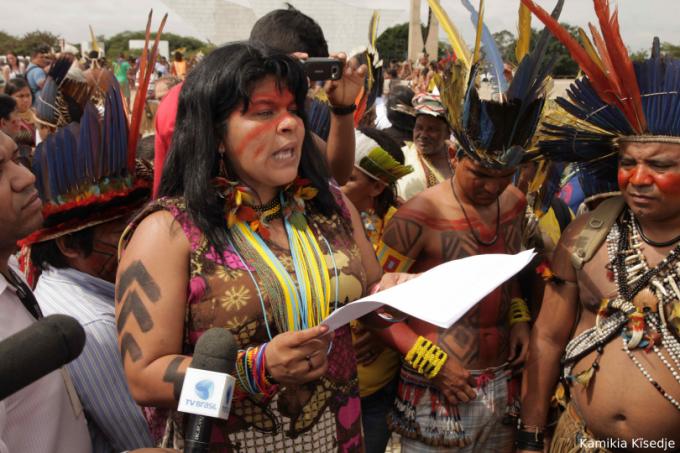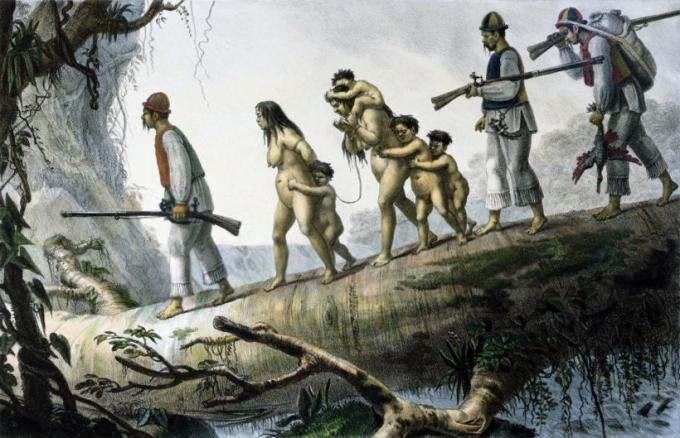
O Indian's day or the Day of the Indigenous Peoples, in Brazil and in other countries of the American continent, is celebrated in April 19th. The date refers to when the First Inter-American Indian Congress took place in 1940.
In Brazil, the date was established by the then president, Getulio Vargas, in 1943, during the authoritarian power known as new state.
see more
Gift Ideas for Family Day at School
Message for Family Day at School – Early Childhood Education
This celebration is essential to preserve the memory and reflect on the past of European colonization on the continent. In addition, it also refers to the importance of seeing indigenous peoples as citizens.
Indian Day is celebrated on April 19th because it refers to the date on which indigenous delegates, representatives of various ethnic groups, such as those from Mexico It is Chile, gathered for the First Inter-American Indian Congress in 1940.
The meeting was intended to put on the agenda several issues related to the situation of indigenous peoples, centuries after colonization and construction of Nation States in the Americas.
With the development of ethnology, a branch of anthropology dedicated to the study of primitive cultures, at the beginning of the 20th century, a great deal of interest in these ethnic groups arose.

So, with this desire to understand the habits and importance of indigenous peoples to history, the desire to develop public policies to safeguard customs began.
In this way, the congress was fundamental for some choices, among them, the date for the Day of the Indigenous People. The following year, other American countries included April 19 in their calendars, in honor of indigenous peoples.
Indian Day should be celebrated for representing the preservation of memory and critical reflection on the past of the domination relationship of European colonizers in the American continent.
The date also celebrates the ancestral contribution of the Indians to form Brazilian society and also the need to have the indigenous culture conserved.
Even more, it is an opportunity for indigenous peoples to be seen as citizens who can determine their own destinies. Therefore, it is not up to the government to decide its choices.
In Brazil, Indian Day was established by the then president, Getúlio Vargas, in 1943, during the Estado Novo. In this context, there was a strong influence of sertanistas and scholars of indigenous communities, such as Marechal Cândido.
Check below the decree-law that established April 19 as Indian Day in Brazil:
“THE PRESIDENT OF THE REPUBLIC, using the attribution conferred on him by article 180 of the Constitution, and bearing in mind that the First Congress Inter-American Indigenous Party, gathered in Mexico in 1940, proposed to the countries of America the adoption of the date of April 19th for the “Day of the Indian",
DECREE:
Art. 1º It is considered – “Indian Day” – the date of April 19th.
Art. 2. The provisions to the contrary are hereby revoked.
Rio de Janeiro, June 2, 1943, 122nd of Independence and 55th of the Republic.”
GETULIO VARGAS
To the public policies for indigenous peoples They only began to be established in the 20th century, with the aim of integrating the Indians into Brazilian society.
Despite this, many representatives of the State did not see an adequate policy for the singularities of the indigenous population to be effectively respected.
Today, there are several legal provisions that seek to guarantee the rights of indigenous peoples. Despite this, this population still suffers from land exploitation by farmers, loggers and miners.
In the midst of all these turbulences, a series of external things are established within the indigenous environment, such as the installation of epidemics and sociocultural relations.

The United Nations (UN) established the Declaration of the Rights of Indigenous Peoples. The text contains the claims of indigenous peoples around the world, in addition to some principles, such as:
The declaration further states that indigenous peoples have the right to dignity and diversity of their cultures, histories and aspirations adequately reflected in public education and in the media. communication.
To learn more, visit: United Nations Declaration on the Rights of Indigenous Peoples
You indigenous peoples of Brazil constitute about 0.47% of the Brazilian population. According to the Brazilian Institute of Geography and Statistics (IBGE), there are about 869,917 indigenous people in Brazil, 60% of whom live on indigenous lands recognized by the federal government.
The IBGE also states that there are about 305 ethnic groups in Brazil, with two main trunks, namely:
To the Top 10 Brazilian indigenous tribes, according to the Instituto Socioambiental (ISA), are:
At the time of European colonization in Brazilian lands, there were about 5 million indigenous people. At first, contact with the Europeans was cordial, mediated by the exchange of products.
In exchange for clothes, mirrors, necklaces and other things, the natives felled brazilwood and prepared the wood for shipment.
A war was only established when the Europeans wanted to install slave labor. As a result, indigenous populations lost their lands and underwent progressive annihilation.

The Portuguese, since arriving in Brazilian lands, had a great interest in knowing the indigenous people to make them allies against the invasion of other Europeans. So they made some classifications, the best known of which were:
Indigenous peoples left various customs to the Brazilian people, such as the use of a hammock, the use of native fruits such as corn, cassava and guarana, in addition to medicinal herbs.
Some techniques were also inherited, such as the techniques for making canoes, straw and vine artifacts and even the use of fire before starting a new plantation.
See too:


